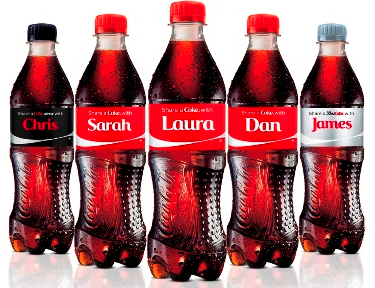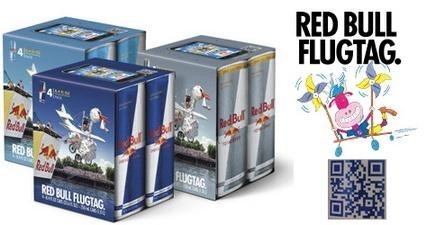3 Overlooked Ways to Integrate Social into Your Company’s Product Packaging

While it may be true that your company needs a strong social media presence, saying so in a marketing advice column has become tired and cliché — like, eye-rolling levels of tired and cliché. But keep those eyebrows unarched for a moment just yet: while you probably have the online space covered, have you ever thought about bringing your social media presence to the physical world? If not, you’re missing a prime opportunity to connect with your current and potential consumers during key decision making moments. There’s one easy place to do exactly this: your product packaging. Here’s how.
1) Coke
If you’ve turned on a TV, browsed your Facebook or Twitter feed, or even just headed to your local convenience store this summer, you’re bound to have encountered Coke’s #ShareACoke campaign, a project that combines social media and product design at every level. As you can see from the above photo, the brand has printed the 250 most popular first names in the US on their bottles to create a personalized–and in many ways flattering–experience for their customer base. Those with less common names need only head over to the ShareACoke microsite to see their name on a bottle.
Customers are intrinsically motivated to share posts about their customized bottles on social media, but the company further encourages sharing with their #ShareACoke and #SelfieSweeps hashtags for Twitter and Facebook, for which customers need only take a selfie with their bottle. Prizes are also available for sharing a coke with a friend at the My Coke Rewards microsite. Not surprisingly, the campaign, which has infiltrated so many different aspects of the customer experience, has been enormously popular–specifically, to the tune of 125,000 posts across all digital channels in less than a month with 45% of the posts positive and only 5% negative.
2) Red Bull
As one of the first brands to embrace QR codes, Red Bull was also one of the first to fail too, seeing as how they put them in a subway with no mobile reception. The second time around, the company went for some place much more functional: limited edition product packaging. This one was designed specifically to promote Flugtag, a unique event the company started in 1992 that invites participants to design crazy creative flying crafts and drive them off a stand into the water.
The QR code taps into that same spirit of creativity and playfulness by leading customers to an interactive game in which customers design their own craft. Winners earn the chance to compete in the competition at the national event — a big prize, since getting into the competition via the normal application process means having to beat out thousands of other competitors. Overall, it’s just another way that Red Bull gets its customers out of their seats and going extreme — so not only is it fun, but it’s also totally on brand.
3) Tim Hortons
If there are two things that go well together, it’s coffee and the news. But why carry around a newspaper when you can simply scan a QR code on the side of your coffee cup and get the latest? If that sounds appealing to you, then you would have liked Tim Horton’s partnership with Gulf News, which had the coffee company regularly printing news and codes onto sleeves so customers could read while they drank. QR codes often fail, but this particular project was successful because both Gulf News and Tim Hortons knew who their customers were, and therefore, what they wanted. With this depth of knowledge, they were able to create a rich, experiential campaign that provided customers with information they actually sought, rather than something that was more blatantly promotional.
The Takeaway
From iconic soft drinks to morning pick me ups, today’s top brands understand the power of bringing social media to their product packaging. There are tons of potential in imitating them, but to do so effectively you’ve got to know the ins and outs of product packaging design, for which this guide will prove enormously helpful. As you create your campaigns, think deeply about your customer’s mental state when they interact with your brand, and use these two unique platforms to ease, guide, or expand their experiences. Have fun, and good luck!
[image error]







